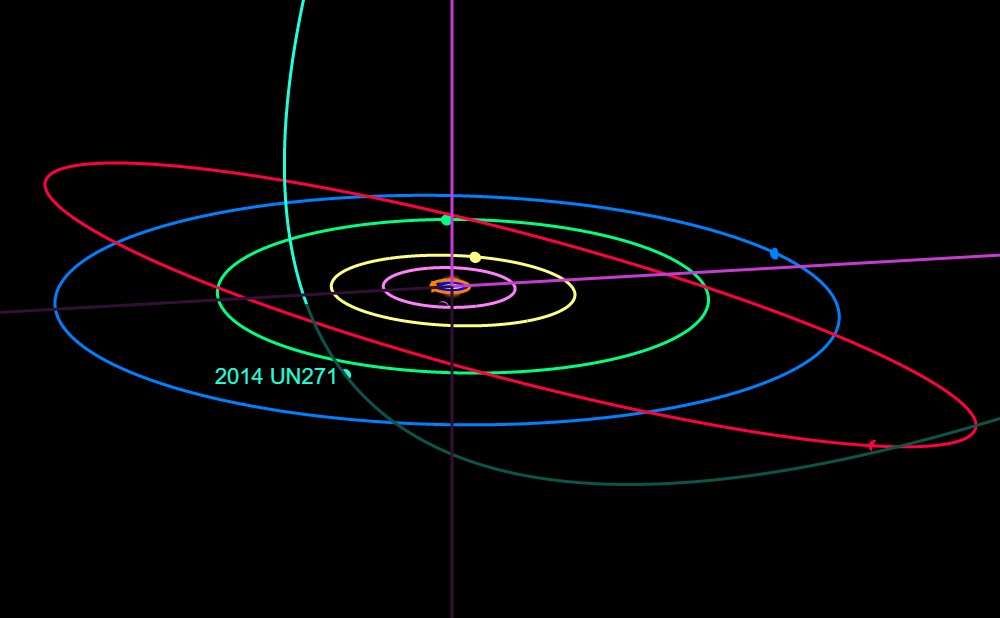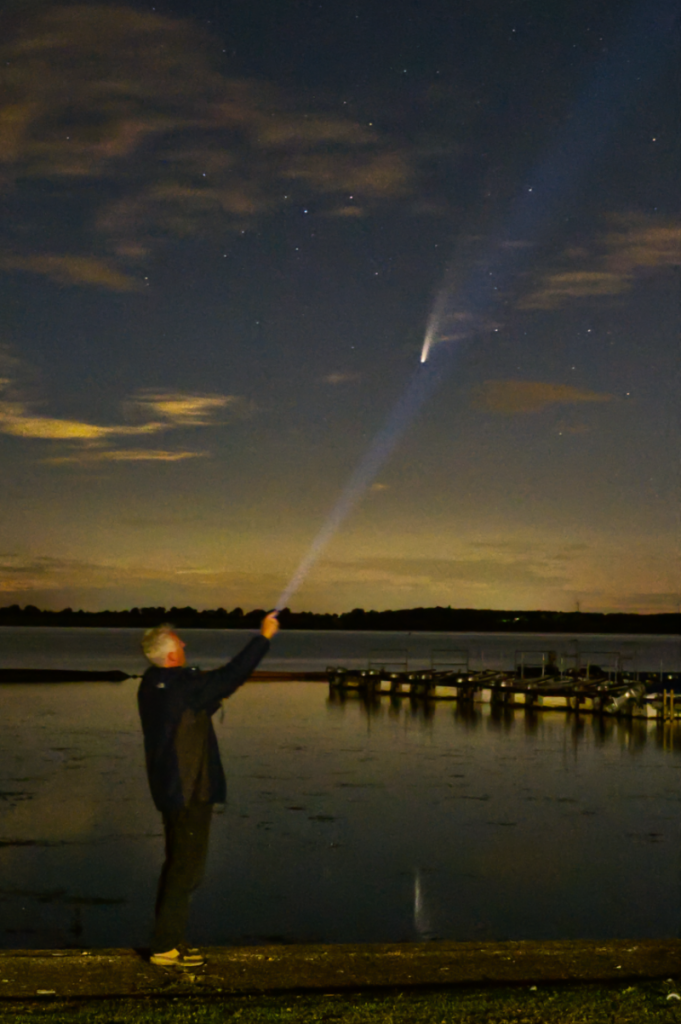There are many stories going around the internet about a “Monster” Comet which is making a beeline for our solar system.
Called 2014 UN271 (Bernardinelli-Bernstein), this comet is currently 20 Astronomical Units (20x the distance of Earth) from The Sun.
The comet is absolutely huge, possibly over 100km in diameter.
https://en.wikipedia.org/wiki/C/2014_UN271_(Bernardinelli-Bernstein)
Comets that big have the potential to make extremely bright apparitions, like Comet C/1995 O1 (Hale-Bopp), which put on a fantastic display in 1997, or Comet C/2020 F3 (NEOWISE), which gave a very fine display in 2020.
2014 UN271 is heading towards us, but will take quite a few years, reaching its closest to The Sun (Perihelion) in January 2031.
This has caused many stories to come out about us seeing a fantastic comet at that time.
Why there has been a sudden flood of interest, I do not know.
We have known about this object and its orbit since 2014.
Unfortunately, this is never going to give us a great show, as even at its closest, the comet is not going to get any nearer to The Sun than the planet Saturn.
As a result, it will not be close enough to The Sun to be heated properly to make it very active for it to produce a lot of gas and dust and a large coma.
Plus being such a long way from Earth, this will reduce its apparent brightness even further.
It will be extremely interesting to see how it behaves, being a brand new Oort Cloud comet, but you can ditch any idea of seeing a real spectacle.
From an amateurs point of view, it is only going to appear as a faint smudge of light at its very best. It will only be visible in large telescopes and revealed using deep long exposure photographs.
UPDATE 1st October 2021
Current thinking is that it won’t even get as bright as Pluto as seen from Earth, possibly around 17th magnitude.
UPDATE 7th July 2021
Some reports suggest that the comet may not be as big as first thought, as it may have a large coma already which is making it look bigger than the solid nucleus.
That’s what I love about comets, they always throw surprises.
So I will be following this story as it develops.
Perhaps they should send the proposed Comet Interceptor from ESA to get a better look at it?
This comet probe is due for launch a few years before in 2029.
https://www.esa.int/Science_Exploration/Space_Science/ESA_s_new_mission_to_intercept_a_comet
Unfortunately, even the Comet Interceptor will not be able to explore this celestial visitor for two reasons.
This cometary probe will be using solar panels to power it.
At the nearest distance of the comet, these panels will not supply enough power to keep it going as it will be too far from The Sun.
Plus it would take a number of years for a probe like this to match the comets motion in space, to keep up with it.
We saw this with the Rosetta comet probe a number of years ago, which took over a decade to reach Comet 67P.
https://www.esa.int/Science_Exploration/Space_Science/Rosetta/The_long_trek
Below – Path of 2014 UN271 through our solar system in 2031,



I found this article when I searched if anyone was thinking about launching a probe to comet Bernardinelli-Bernstein. I’m a bit confused about the launch window candidacy, is there a backlog from existing rockets that a purpose-built probe cannot reach the comet in time?
I say have it run off an RTG, have it land and stay there. It’ll have two missions: composition analysis and maybe deep space telescope. How quickly can it be put together and how much could it cost?
It’s matching the path and the speed of the comet that is the problem.
It took 10 years for Rosetta (and Philae) to catch up and match Comet 67P.
So to build a new probe and test it, then launch it, the comet will be long gone.